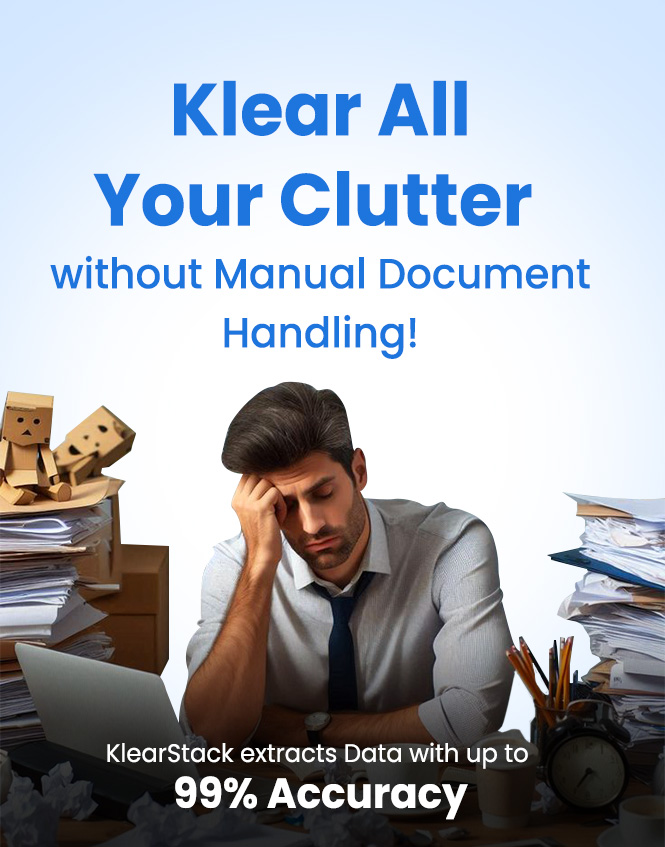[vc_row pix_particles_check=””][vc_column][vc_column_text]
Artificial Intelligence (AI) has already transformed our everyday lives with its contextual data processing characteristics and adaptability. Google’s predictive search, Siri, or Alexa are alien to none.
However, businesses are one step ahead in leveraging the pool of opportunities brought by AI. The technology has entirely evolved the business scenario by streamlining the internal processes and workflows while improving the overall productivity.
Let us capture one such use case of AI that triggered business efficiency.
The evolution of OCR with Artificial Intelligence
The science behind the extraction of data from scanned, photographed, or handwritten documents and converting them into machine-readable format is known as Optical Character Recognition (OCR). Since its advent in the business landscape, the technology has enabled businesses to process physical data into digital format to handle data effectively and automate administrative tasks.
Little did they know, the businesses were actually adding more layers of manual processing behind the “layout dependent” technology. Due to its inability to interpret data contextually and rather dependency on templates to identify the document entities, the OCR technology failed to really transform the way businesses take care of unstructured documents. Mere extraction of characters is not something that the business needs. The technology should even interpret the extracted characters.
For interpreting even bit sized data from a document, OCR needed rules and templates. It was a complex set up required for every other document that didn’t follow the same structure as the previous one.
The traditional OCR solutions could successfully scan and extract the information, but lacked relevance and accuracy in the results. Consequently, the productivity declined, costs increased, and penalties started blocking the revenue streams.
Before OCR would have complicated data processing in its totality, AI joined hands with OCR, and the concept of Intelligent Document Processing (IDP) took over the game.
While OCR assumes documents to be of a fixed template, leaving room for errors and inaccuracy, IDP assumes documents as they are not fixed, which changes the way data extraction AND interpretation is performed.
IDP incorporates Machine Learning to “contextually understand” the documents before processing and uses deep learning algorithms to extract data
irrespective of their placement and representation in the document.
Here are some practical business applications where AI-driven OCR solutions surpassed traditional OCR for improved business efficiency.
1. Invoice Processing
Vendor Invoice processing is a central business process that involves data extraction from all the entities mentioned in the invoice.
When traditional OCR is used to capture data from invoices, a new set of rules and templates is required for variation of invoice. Further, those templates need a redesign for documents with variations in the field format. The process became manual again and was prone to errors and inaccuracy. The result – processing cost of $12 per invoice, 32% late payments, and 36% vendors sending you reminders thereby resulting in reduced reputation.
When AI-based OCR was employed to do the job, it replaced manual processes by eliminating templates from the scenario. With a template-less approach, AI-powered OCRs could now capture field data by comprehending the context (both visual as well as textual context) of the data, rather than depending on predefined entity names and their placements.
The technology eventually leveraged computer vision, text analytics/NLP, and adaptive learning methods for smart data extraction and reconciliation + exception management to validate the captured data. The result – 20x reduction in the setup costs, boosted productivity, 95% accuracy, and 70% reduction in manual work.
2. Purchase orders and Expense Receipt Automation
Like invoices, customer purchase orders (PO) and expense receipts also form an integral part of day-to-day business activities. With traditional OCR, data entry and management was labour-intensive and required human intervention to deal with different document formats and value representations.
While purchase orders required manual matching and reconciliation with cited invoices, capturing expense receipts was prone to errors, mismatched entries, and hefty processing.
On the other hand, AI-driven OCRs use deep learning technology to automate data capture and extraction with support for different document layouts, anomalies, and file-formats. As a result, this combination brought operational efficiency, improved accuracy, and automated OCR tasks to the business landscape.
3. Trade Finance Document Processing
Billions of papers circulate in documentary trade, intensifying the usage of paper documents in Trade Finance. That said, transactions, document reviews, compliance checks, data extraction from application forms, and document processing involved a manual approach. Traditional OCRs could only change templates and increase the transaction time while scanning papers and reviewing terms and conditions against the trade document.
AI-driven OCR, unlike the traditional ones, captured unstructured data from trade documents with 95% accuracy and intelligence using a template-less data extraction approach. They even combined ML to automate decision making and trade compliance checks, reduce transaction costs up to 80% and Average Handling Time(AHT), and triggered finance processing.
4. Consumer Durable Loans
Since consumer durable loans make purchases affordable for the customers, the latter depends on financial institutions for a low-interest rate financing. Processing a consumer durable loan requires extracting and validating data from different documents and the institutions would never want their customers to wait.
Instead of employing traditional OCRs to capture consumer data which ultimately results in irrelevant information, late approvals, and higher processing costs, financial institutions are now turning to AI-driven OCR solutions.
AI-driven OCR can intelligently capture data from invoices, Aadhar Cards, PAN Cards, Driving License, Passport Scans, and more while eliminating human intervention in loan processing and increasing interoperability up to 100%.
How Does KlearStack Fit Into The Big Picture?
Based on the aspects mentioned above, KlearStack brings you a template-less, end-to-end automated data extraction and interpretation technology to root out manual document processing. KlearStack is an AI-driven OCR, developed to transform your operations that deal with unstructured document processing with 200% productivity, 90% reduction in costs, and 95% automation.
Get in touch with us today to learn more about how KlearStack can add extra layers of automation and productivity to your internal business processes.
[/vc_column_text][/vc_column][/vc_row]





